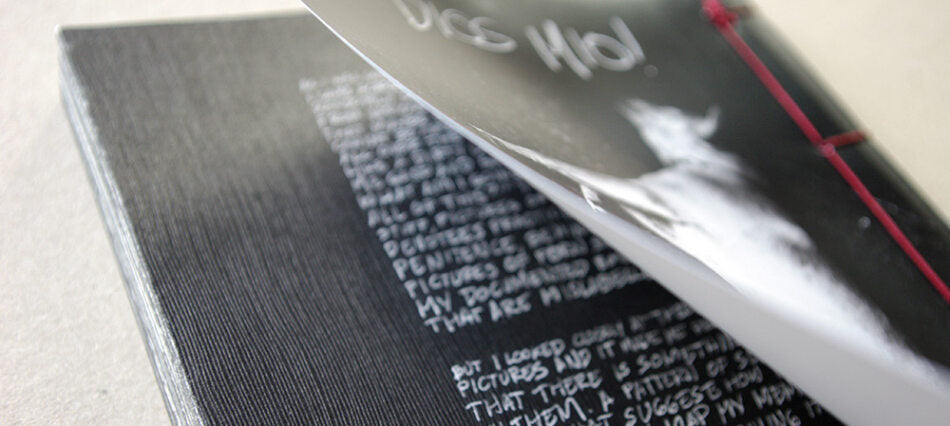Your Cart is Empty

Dios Mio! Interview with Brian Sergio
Brian Sergio is a Photographer, Painter, and Graphic Designer. His work has often been described as raw, transgressive, and irreverent. Sergio currently lives and works in Manila, Philippines.Dios Mio! is his new photobook published bydienacht Publishing.
Dios Mio! is raw, passionate & direct, without a bit of compromise to be softer to please the viewer, without turning away from any detail of the life that is genuinely enjoyed and fully lived through the way it is, however unconventional it might seem.
We talked to Brian about his photography and sex-positive scene in the Philippines.

Your images feel very instinctive. What makes you take your camera and press the shutter? What triggers you?
Anything really. I carry a camera and shoot as much as I can. It doesn’t matter what type of subject I shoot as long as I find it interesting I snap a picture.
In "Dios Mio!" you combine pictures of christian devotees practicing their penitence, behind the scenes pictures of porn shoots, and your own Kinbaku sessions. What do these seeming extremes share?
To be honest, I never really had any idea what was coming out of this project. These are mostly pictures from different files from potential and discontinued projects. But the more I looked at them the more I understood there’s something there. The relationships and the contrasts of these topics, no matter how different in beliefs, practice and outcome, are quite the same. So it is only appropriate that I mix these images together and look at their similarities.

Is photographing during your own Kinbaku sessions a part of the process for you?
Yes of course! The practice of Kinbaku is a part of my life. I’d like to get involved in these activities and have these pictures as my diary. To keep track of what I do and share it to whoever wants to see it.
How does the positive sex scene look like in the Philippines? Is it big and vibrant?
The sex positive and fetish scene in the Philippines is still underground and full of irony. Filipinos still have much to learn about these things. I guess the influence of religion has something to do with it. So people who are into it are keeping it underground. So it's not as big and vibrant as you think, but it’s slowly getting there.

Is there anyone else you know who is documenting this scene as you are? Is it common?
There are some photographers that shoot the same things that I do, but most are not as involved in the practice as I am. Even if some of them try to get involved they lack the knowledge of what the craft truly means. So yes, it is quite common but lacking the context.
Is there anything you would not photograph belonging to this scene? Why?
I’m always open to shooting anything. Although, there are certain kinks and fetishes that I have yet to explore. In those cases, I don’t always have to get involved.

What is the reaction to your work in the Philippines?
Shock of course. It’s a conservative country with 3rd world sensibilities. So they are not used to something new or taboo. They just follow waves of trends and norms.
Do you have any favourite Filipino photographer(s)? Is the local photography scene interesting for you?
Honestly, I don’t have any favourites when it comes to local photographers. They don’t have the qualities of the direction that I wanted to take. I am an outsider to the scene. I guess I’m a little bit familiar with the documentary and photo journey guys and they have all these exhibitions and workshops and stuff. But at the end of the day, I just mind my own business and work on my own projects like a lone wolf.
But local filmmakers, on the other hand, had a huge impact on my life. Filmmakers like Elwood Perez, Peque Gallaga, Tikoy Aquiluz, Joey Gosengfiao, and Lino Brocha to name a few. They tackle interesting topics that I share deep in my heart and I try to relate my pictures to their stories.
dienacht Publishing is an independent photobook publisher, based in Leipzig (Germany). "Die Nacht" means “night" in German and we do seek everything hidden, shadowed, underground. To shed light and turn it into a photobook.
Take a look at Brian’s work.
